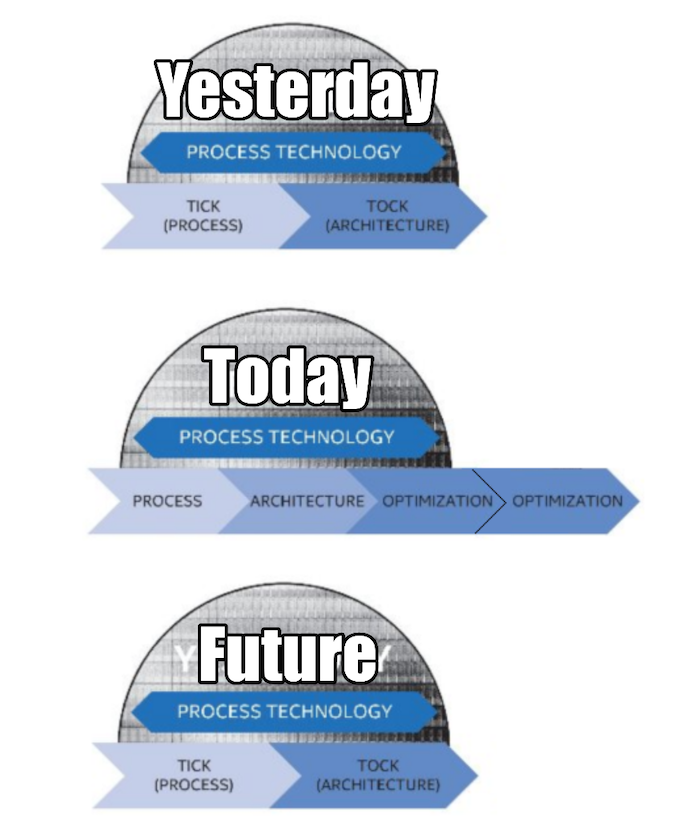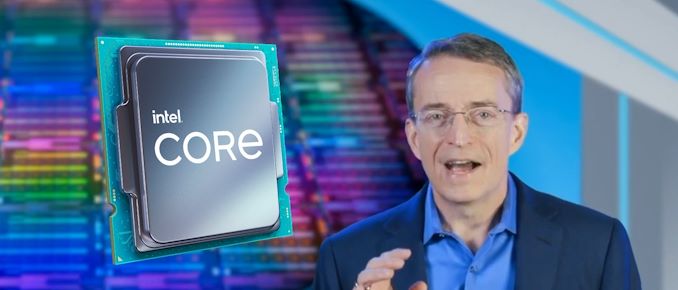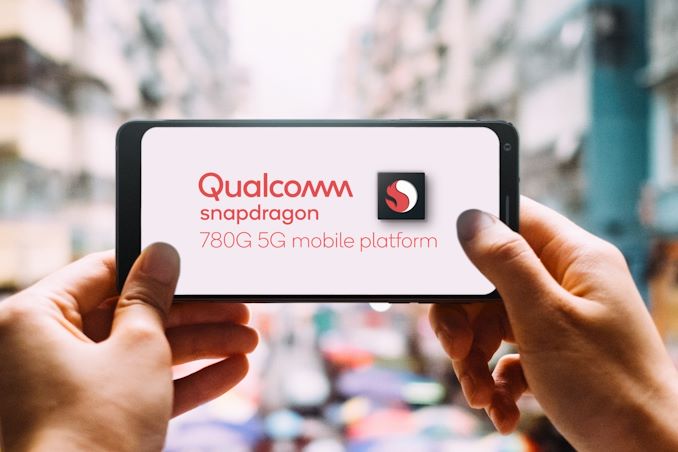Results 11,061 to 11,070 of 12089
Thread: Anandtech News
-
-
-
03-23-21, 06:13 PM #11063
Anandtech: Intel to Revive ‘Tick-Tock’ Model, Unquestioned CPU Leadership Performance
As part of today’s announcements, during Intel’s Q&A session after the prepared remarks, CEO Pat Gelsinger explained how Intel is going to revive its fortunes when it comes to its leading edge compute products. One of Gelsinger’s mantras seems to be that unquestioned leadership products bring unquestioned leadership margins for those products, and for Intel to execute, it needs to return to its days of old.
In the past, through the 1990s, 2000s, and into the 2010s, Intel’s manufacturing philosophy was known as ‘Tick-Tock’. This means that for every product generation, the leading edge compute hardware was either a Tick (process node enhancement), or a Tock (microarchitecture enhancement). Each generation would alternate between the two, allowing Intel to take advantage of a familiar design on a new process node, or using a mature node to enable a new performance-focused design. That policy was scuppered when delays to Intel’s 10nm forced Intel into more of a Tick-Tock-Optimization-Optimization-Optimization model.
Today CEO Pat Gelsinger stated that at Intel’s core it has to re-establish the Tick-Tock model that enabled repeated leadership in the CPU ecosystem, buoyed by a healthy CPU roadmap. Part of this is re-establishing discipline in Intel’s ranks to continually provide both microarchitecture updates and process node updates on a regular expected cadence. Pat stated as part of the call that Intel will look towards a confirmed yearly process node improvement, and as a result, there might be a lot of Ticks in the future, with a push to more Tocks as well.
On top of this commentary, Pat Gelsinger also stated that Intel’s CPU roadmaps are already baked in through 2021, 2022, and 2023. The company is thus looking to 2024/2025 for ‘unquestioned CPU leadership performance’, which traditionally means the fastest processor for single thread and multi-thread workloads. This is for sure a laudable goal, however Intel will also have to adapt to a changing landscape of chiplet processor designs (coming in 2023), enhancing on-die accelerators (GNA already present), and also what it means to have leadership performance – in the modern era, leadership performance doesn’t mean much if you’re also pushing lots of Watts. Intel stated that its 7nm process is now comfortably on track to deliver Meteor Lake, a client CPU using tiles/chiplets, in 2023, however we are likely looking to a 7nm variant or even external processes for a 2024/2025 product. Intel has also stated that it is looking to consider the core of its leading edge compute on external foundry processes, although one might argue that this doesn’t explicitly say ‘CPU’.
It is also worth noting that Intel/Gelsinger isn’t calling its disaggregated silicon as ‘chiplets’, and prefers to use the term ‘tiles’. This is because Intel’s tiles amount to long wires across 3D packaging technologies like EMIB and Foveros, compared to package-based multi-die interconnect that require buffers as well as control fabric. Tiles by this definition are more costly to implement than chiplets, and have additional thermal considerations by having high-powered silicon close together, so it will be interesting to see how Intel balances these new packaging technologies with the more cost-sensitive elements of its portfolio, such as client processors.
It’s been known that Intel’s microarchitecture teams haven’t been idle waiting for 10nm to come through the pipe, with a number of designs ready and waiting to go for when the process node technology matures. With any luck, if Intel can get a headwind with 7nm, when 2024 rolls around it might all come thick and fast.
More...
-
03-23-21, 06:13 PM #11064
Anandtech: Intel’s New IDM 2.0 Strategy: $20b for Two Fabs, Meteor Lake 7nm Tiles, Ne
The new CEO of Intel, Pat Gelsinger, has today outlined his vision for Intel over the coming years. During an online presentation entitled ‘Intel Unleashed: Engineering The Future’, Pat Gelsinger outlined five key topics upon which Intel will work towards and what it means for the company at large. At the center of this is a reaffirmed commitment for Intel to retain its own fabs, but also double down on its ability to drive the latest technologies at scale by building new manufacturing facilities inside the US.
More...
-
03-23-21, 08:39 PM #11065
Anandtech: Intel’s x86 Designs No Longer Limited to Intel on Intel: IP Blocks for Fou
Today Intel’s CEO Pat Gelsinger has outlined two key changes to Intel policy: one derived from Intel’s plans to offer foundry services to external partners, and the other from Intel starting to outsource its core compute product families in order to get the best product at a given time. Not only is Intel set to offer x86 core IP to customers through its new Intel Foundry Services, but also Intel is looking to creating leadership compute products on external nodes. These are complete 180º turns from how Intel has previously operated.
For the last 20-25 years, Intel has been steadfast in keeping the crown jewels of its product design firmly inside its very protective walls. Over the years, Intel’s x86 designs have mostly led the market in leadership performance and power (except for Pentium 4 and Rocket Lake), and limiting use/production for Intel-only use has enabled the company to improve that design with laser focus, manufacturing not-withstanding. Keeping the cores for internal use only means that neither customers nor competitors were able to see the raw design specifications, and for a long time this has enabled Intel to keep key features, such as its branch predictors, away from all but the most prying eyes.
In a twist to the norm, Intel is now set to dissolve those walls keeping its x86 cores it itself.
First up is Intel’s Foundry Services, a second crack at offering external customers the ability to use Intel’s manufacturing facilities. Idle fabs are costly, and so with IFS, Intel wants to enable a revenue stream while at the time meeting global demand for semiconductors, especially as it pertains to local supply chain security and migrating the world’s semiconductor reliance away from Asia more into the USA and EU. IFS will stand as a separate business unit inside Intel.
As part of IFS, Intel will both offer raw manufacturing services, similar to a standard foundry like TSMC and Samsung, as well as its portfolio of IP to customers. This is a Big Deal™. Intel will enable a fully vertical model with its IP portfolio, allowing customers to choose from x86 cores, graphics, media, display, AI, interconnect, fabric, packaging, and other critical foundational IP from other sources (such as Arm, RISC-V). The exact way in which customers will be able to license the IP will be announced in due course, but if Intel were to follow the Arm model, then Intel customers will get access to Intel’s 86 core designs.
Arm’s model is bidirectional: core IP and architecture IP. The first allows you to build an SoC with defined cores, while the latter allows you to build your own cores with the instruction set (like Apple does with Arm). When applied to Intel, with the core IP, a customer can build designs based on Intel’s x86 cores with their own or external interconnects, or in different configurations to Intel’s standard model that are more optimized for what that particular customer requires. At the minute Intel is set only to offer core IP licenses, not architecture IP licenses.
If we take this idea and extrapolate, we could very well see x86 cores combined with new memory controllers, active interposers with custom interconnects.
Intel has kind of done this before, although it was very much a walled garden. Intel offered foundry services almost 7 years ago, under then CEO Brian Krzanich, that allowed very select customers to build new SoC designs, with Intel's help, and only for very select pre-approved use cases. In that time, Intel's effort for a proper foundry business was, in Gelsinger's own words, 'weak'. The new model is set to be more open, as far as we're led to believe.
The only question becomes to what extent will Intel offer x86 cores. Will it be the latest cores designed internally, or would they be a couple of generations behind? Will those designs be offered on a variety of process nodes, or just on a singular process node? Would a customer be able to get a core IP license and build it at another fab? This is where the second part of the announcement comes in.
As part of today’s announcement, Intel has stated that it will be expanding its use of third-party foundry capacity. Pat Gelsinger highlighted that it would be leveraging its relationships with TSMC, GlobalFoundries, Samsung, and UMC, to enable the best manufacturing facilities for its leading edge product designs, from communications and connectivity to graphics and chiplets. This builds on the announcements made by former CEO Bob Swan last year in light of Intel's own troubles on its 7nm process. Today's announcements reaffirms Swan's messaging, given that at the time the word 'pragmatic' was used, so while this has probably been in the works in a while, it is good to get a clear confirmation. As part of this announcement, to quote:
‘Gelsinger said he expects Intel’s engagement with third-party foundries to grow and to include manufacturing for a range of modular tiles on advanced process technologies, including products at the core of Intel’s computing offerings for both client and data center segments beginning in 2023’The key phrase here is ‘core of Intel’s compute offerings’. It could be interpreted in two ways: at the core of a CPU design is a CPU core, which would mean an x86 design unless Intel were to skew away from x86 (unlikely). The other alternative could be an IO chiplet, which is also a ‘core part’ of a compute offering. Paul Alcorn from Tom’s Hardware has confirmed from Intel that the key element here is ‘compute cores’, and although Intel hasn’t specifically said the ISA of those cores, we are set to believe that Intel does indeed mean x86.
This means that other foundries will have access to the floorplans of Intel’s x86 designs, which used to be a big no-no at Intel. Now in saying that, foundries often have strict NDA requirements that stop them sharing designs with customers, as you might expect, but it’s the fact that Intel is even letting another foundry build x86 cores that is the highlight of this announcement.
All-in-all, Pat Gelsinger is enabling a roadmap that allows Intel to pivot, and pivot hard. Steering the Intel behemoth is difficult at the best of times, however Pat’s arrival and enthusiasm has certainly made the company more comfortable in finding where its next generation of revenue is coming from.
More...
-
-
03-29-21, 08:49 AM #11067
Anandtech: The Intel B560 Motherboard Overview: 30+ Budget Models Starting from $75
Intel is set to launch its latest generation of processors, known as Rocket Lake 11th Gen, on the 30th March 2021. We know Rocket Lake brings with it PCIe 4.0 directly from the CPU itself and is expected to bring better IPC performance over the last generation Comet Lake architecture. We've already takena look at 50+ models on Intel's flagship Z590 chipset, which Rocket Lake works best with, but with the high prices, users who don't plan on overclocking the CPU have the option of the more value oriented B560 chipset. As an upgrade to the older B460 models B560 brings some new features to the table including support for Wi-Fi 6, up to four USB 3.2 G2 ports, and it also supports memory overclocking as well.
More...
-
03-29-21, 12:11 PM #11068
Anandtech: Xiaomi Announces Mi 11 Ultra: The Largest Smartphone Camera
Today, within a flurry of device announcements, Xiaomi announced the new Mi 11 Ultra as a higher-end follow-up to the Mi 11, representing the company’s newest top-of-the-line smartphone with new unprecedented camera capabilities.
More...
-
03-30-21, 09:58 AM #11069
Anandtech: Intel Rocket Lake (14nm) Review: Core i9-11900K, Core i7-11700K, and Core
Today is the official launch of Intel’s 11th Generation Core processor family, given the internal name ‘Rocket Lake’. Rocket Lake showcases new performance gains for Intel in the desktop space, with a raw clock-for-clock performance uplift in a number of key workloads. In order to do this, Intel have had to retrofit its 10nm CPU and GPU designs back to 14nm, because only 14nm can achieve the frequency required. In exchange, the new processors to get this performance run hot, cost more for Intel to produce, have two fewer cores at the high end, but customers also get PCIe 4.0 on Intel’s mainstream desktop platform for the first time. In our review today, we will be going over Intel’s new hardware, why it exists, and how it performs, focusing specifically on Intel’s new flagship, the Core i9-11900K, which has eight cores and can boost up to 5.3 GHz.
More...
-
03-30-21, 02:07 PM #11070
Anandtech: Arm Announces Armv9 Architecture: SVE2, Security, and the Next Decade
Today, as part of Arm’s Vision Day event, the company is announcing the first details of the company’s new Armv9 architecture, setting the foundation for what Arm hopes to be the computing platform for the next 300 billion chips in the next decade.
More...
Thread Information
Users Browsing this Thread
There are currently 19 users browsing this thread. (0 members and 19 guests)






 Quote
Quote



















Bookmarks